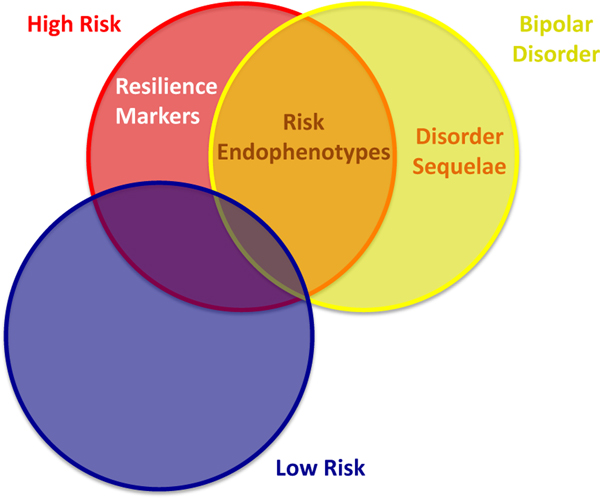FIGURE 1.
Identifying neural markers associated with risk, resilience, or disorder sequelae. Note: Having all three of these groups (high- and low-risk youths and those with bipolar disorder [BD]) is necessary to disentangle these markers. Brain activation patterns (a) shared by high-risk (HR) and BD (but not low-risk [LR]) youths (HR+BD≠LR) may indicate potential risk endophenotypes; (b) unique to high-risk youths (HR≠BD+LR) may indicate potential resilience markers; (c) and unique to youths with BD (BD≠HR+LR) may indicate potential disorder sequelae.

